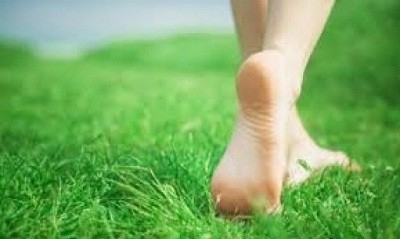Gone are the days when walking barefoot was considered a kooky counter-culture trend. It has now become a scientifically proven way to enjoy several health benefits, such as improved sleep, reduced inflammation, and increased volume of antioxidants. The practice is also known as "earthing" and it involves walking barefoot on grass, soil, or sand. You have to be on a natural surface, which means walking on that sidewalk doesn't count. We'll discuss the benefits of walking barefoot on almost all tolerable surfaces as well as providing tips on how to maximize the benefits.

What Are the Benefits of Walking Barefoot?
Walking barefoot is a simple way to strengthen the stabilizing muscles of the ankle and feet. It will improve your overall balance and help you perform better as a sportsman.
Walking barefoot will help prevent stability problems that affect the knee, ankle, and hip positions. Stronger feet are more likely to slow down the feet deterioration and make you less prone to injuries.
The practice will gradually improve your proprioception that is your unconscious perception of space and movement within the space around you. This will help you connect to your environment, which in turn will improve your movement and balance.
Going barefoot is a great way to strengthen your ankles, which helps prevent back and knee pain that often arises due to improper foot mechanisms.
Barefoot walking will help improve your muscle alignment and strengthens your neuromuscular pathways of the leg. This in turn will improve the muscle firing sequence and you will move with more control.
Barefoot walking engages your arch muscles and even strengthens your arches that will prevent several orthopedic problems.
Going barefoot will improve the overall mobility and flexibility of your feet. This also gives you a wider range of motion.
Wearing wrong shoes is usually the root cause of many foot problems – it may lead to issues like corns, bunions, hammertoes, athlete's foot, fallen arches, and ingrown toenails. Research has shown that barefoot walking will keep these foot problems at bay and even prevent calluses.
Barefoot walking improves your Chi (Qi) and gives your entire body the strength it needs to perform day-to-day tasks. Your feet build a connection between your body and the ground, so walking barefoot will help release energy and improve energy flow throughout your body.
Going barefoot is one perfect way to wake up your long-dormant muscles of the legs and contribute to overall health. Doing this will improve blood flow to your feet, and increased blood flow will translate into less pains and aches, warmer feet and legs, and less varicose veins. Other benefits include reduced chronic pain, improved sleep, improved energy, reduced stress and accelerated recovery from athletic activity. It also helps lessen menstrual and hormonal symptoms.
Tip and Precautions for Walking Barefoot
If you're interested in adopting this lifestyle, it is important to pay attention to the following do's and don'ts of walking barefoot.
Try to walk on grass when it contains some moisture.
Avoid walking on soil or grass that is littered with bird droppings, dirt, etc.
Walking on beach soil is an ideal choice to ensure your feet only absorbs energy, not toxins.
Try walking barefoot after flying to avoid disturbing your body's bioelectrical rhythms.
Never forget to wash your feet thoroughly after grounding.
Never walk barefoot when you have an open cut on your soles.
It is never too late to explore the benefits of walking barefoot. It's not a rocket science either – just slip off your shoes and place your bare feet on the ground for a few minutes. In the beginning, you should look for naturally softer grounds like dirt paths, grass, and sand. Once your muscles and joints in your feet and ankles strengthen a bit, you can then switch to a wider variety of surfaces.
The basic idea is to maintain a contact between your bare feet and the surface of the earth. For this, you can even consider wading, walking, or swimming in mineral-rich ocean water because it provides sustained skin contact.
Variations of Walking Barefoot
Instead of walking barefoot, you can run too. By running without shoes, you will be able to cover greater distances without feeling tired. You can take off your shoes even when you're engaged in other sports such as mountaineering, rock climbing, etc., and feel the ground underneath your feet.
Are There Any Downsides of Walking Barefoot?
There are certain downsides of going barefoot, and the most common issue is to feel awkward when starting this practice for the first time. Some shops and stores may have policies that restrict you to enter with bare feet. You may want to carry spare slippers with you to handle such situations. In some countries, it's illegal to drive without wearing shoes.
You may not like your feet getting dirty after walking barefoot, and it may not be a pleasant situation when you visit your relatives or friends. Walking without shoes may even lead to smelly feet, which can be quite annoying for others. You may even notice severe pain when you first change your routine and go barefoot. Thankfully, the pros clearly outweigh the cons of walking without shoes, but you will need support and motivation to stick to your new routine.

View All Comments /Add Comment